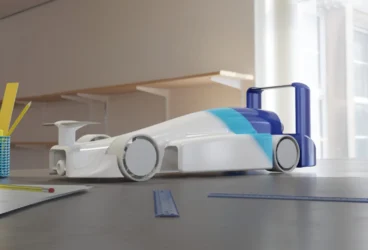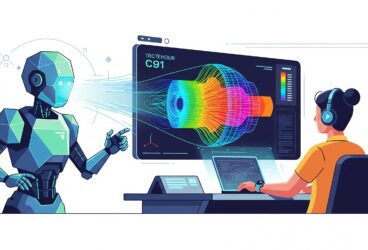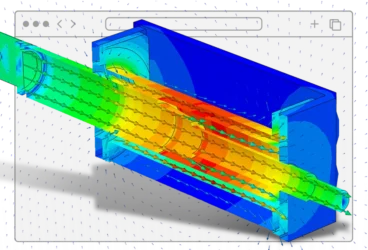The concept of engineering, engineers, and engineering teams can be argued to have existed since ancient times, with humans exploiting basic mechanical principles to develop useful tools and objects. And while the term to describe it—with a more recent etymology dating back to 1325—derives from the military field (an “engine” referred to a military machine), it now covers over 20 industries and continues to expand and evolve.
In today’s world, engineering plays a part in almost everything that surrounds us, from the minute you turn on your faucet to brush your teeth in the morning, to driving to work in your car, and all the way to turning out the lights before bedtime; from basic needs such as housing, food, medicine and transportation to entertainment and luxury goods. With innovations continuously being brought to market, engineering is experiencing a steady growth extending to all of its wide-ranging facets. The European mechanical engineering sector, for example, is expected to grow at an average annual rate of 3.8% over the next 10 years [1], while the global engineering services market was valued at about $1,024 billion in 2018 and is expected to grow to $1,515.66 billion at a CAGR of 10.3% through 2022 [2].
Such growth is driven not only by endless possibilities and passion for innovation, but more commonly, competition. With new players challenging the status quo, companies need to stay competitive by using (or developing) the latest technologies, increasing their product’s performance, and improving their development process in order to save time and costs to ultimately be faster to market than their competitors. This affects every level of the product design process from the design engineers to quality assurance teams, all the way to sales, marketing, and the CEOs.
Together with the overarching discipline, engineering teams have also evolved. In a globalized world, teams are often international and dispersed around the globe across different time zones. Remote work has also become popular [3] and the trend seems to continue to grow. Technology has opened up these possibilities, which bring significant benefits allowing companies to hire the best talent and have access to multicultural, multi-skilled staff. The advantages don’t come without challenges, however, as teams need to find tools, solutions, and processes that keep feedback rounds and teamwork running.
No longer can engineering teams be bound by project silos, time zones, or physical locations to meet demanding deadlines. So how can engineers use this to their advantage?
Collaboration Challenges for Engineering Teams
Collaboration has been so largely adopted in the way people work, that it is often a point of frustration for employees when it doesn’t exist or is inefficient. In fact, a study published by Salesforce indicates that 86% of respondents cite lack of collaboration or ineffective communication for workplace failures.
Still, in any industry, the bigger the team, the harder it is for its members to collaborate on projects. When it comes to engineering, the hurdles are even steeper due to the software solutions used, which rarely provide collaboration features. From computer-aided design to computer-aided engineering (CAE) tools, engineers are generally used to working alone on a project, saving the results, and only after these steps, trying to then relay it to their colleagues, leaving room for miscommunication and left out information.
This is mainly due to how these tools are deployed, as traditionally, engineering solutions have been desktop-based. With limited licenses installed on dedicated computers, not only collaboration is limited but so is accessibility, as the usage requires being present in a particular location. In turn, cloud computing has challenged the status quo, opening up new possibilities.
This paper addresses the challenges large companies face in having teams collaborate on design or engineering projects and proposes the use of cloud-based software with dedicated team plans to increase productivity and foster cooperation. Its focus is on computer-aided engineering (CAE), which traditionally has had very limited collaboration possibilities until the emergence of the cloud.
Cloud-based CAE Has the Collaboration Door Wide Open
The cloud has made it possible for entire applications, no matter their complexity, to be developed, installed, and accessed in a standard web browser. With such a level of accessibility, sharing and collaboration capabilities are practically native to this new field.
While the cloud is embraced by many industries, engineering has not been as fast in joining the trend. Despite having been among the first fields to benefit from technology as early as the 1980s, both computer-aided design (CAD) and computer-aided engineering (CAE) are reluctant to catch this particular high-speed train.
Most of the CAD and CAE software on the market is still traditional and on-premises. Developed over several decades, the most popular tools include a whole host of complex features and are uncontestedly state of the art. They are not known for their accessibility, cost-effectiveness or ease of use, however. And these challenges can limit the technology’s adoption altogether.
Whereas CAD software is part of any engineer’s toolbox, with or without the cloud, for CAE the situation is quite different. In fact, we estimate that around one out of 20 engineers who could benefit from simulation in their product development process has access to simulation tools. The low numbers are tied to large upfront hardware as well as software investments they imply.
And while engineering teams might still be torn when it comes to moving to the cloud, renowned as well as new players in the industry have acknowledged that digitalization in engineering is bound to happen. AutoDesk®, Dassault Systèmes®, Siemens®, Onshape, and SimScale are only a few of the CAD and CAE companies that have brought cloud-based solutions and collaboration features to the market.
In fact, SimScale has recently released enhanced collaboration features dedicated to meet the needs of large engineering teams when working on FEA or CFD simulation projects.
Collaborating on Simulation Projects with SimScale
With the collaboration features available on SimScale, multiple users are able to work simultaneously on the same simulation project from any location, without leaving their web browser. No copies are necessary as all team members have access to the same version (just like Google Docs) and all changes are available within a dashboard. This enables engineering teams to share details, simulation knowledge or feedback quickly, having a true iterative design process and saving time. Such a working model is ideal for global teams as well as remote work setups, as different members can access the same project in real-time.
A detailed overview of the collaboration features can be found in this article.
How Engineering Companies Use Cloud-Based Simulation
While cloud-based CAE is not yet standard in the engineering team’s software stack, thousands of early adopters are already enjoying the benefits it brings.
This case study, for instance, tells the story of design and consultancy office Thermo-Consult, which was contracted by the University of Pannonia to provide HVACR engineering services for a cleanroom that would host an electron microscope. The goal was to create a multi-operational state ventilation system in the cleanroom with a changeable air flow pattern.
Cloud-based providers Onshape and SimScale were chosen for CAD and CAE respectively. As both tools work in a web browser and have an integration, creating the CAD model in Onshape and transferring it to SimScale with a single click made the workflow very quick. The simulation results confirmed the engineer’s expectations about the main flow characteristics. Using online numerical modelling enabled him to fine-tune the first concept and check the air state and velocity parameters at different flow rates and operational states.
“During the whole project, the SimScale support team did a great job. The project leader had a daily-based contact with the support team. All the problems were solved in a fast and professional way. We also received comprehensive answers to questions about the advanced settings.” mentioned Gabor Petrika, project leader, and lead designer.
Employing cloud-based simulation in the first stages of testing, Thermo-Consult was able to get started with the tool immediately and test different scenarios in a short amount of time. But the cloud did more than that; whenever the user ran into problems or had questions, the support team was able to assist in real-time.
Another example is Techtree Engineering Ltd., a consulting engineering company operating in the oil and agricultural industries. With the goal of improving their analysis methods to gain a competitive edge, the Techtree Engineering team turned to SimScale for two main reasons. First, the platform has a minimal upfront investment and no expensive hardware costs. Second, the cloud-based software allowed the team to work remotely, aligning perfectly with their workflow and company model.
Non-linear analysis was conducted on a part where the load caused a stress concentration to exceed material yield. It was found that the stress was self-limiting and did not cause excessive residual stresses. Based on the simulation results, the team was able to consistently and confidently increase the load rating of their tools, making both them and their clients more competitive.
“Using SimScale allowed us to increase the rated load of several tools by up to 20%. In a competitive market, that gives our clients the edge they need over the competition,”
said Tyler Lindstrand, engineer at Techtree Engineering.
Conclusion
These stories are very few examples of the projects that engineering teams have brought to a new level by using cloud-based solutions. While time and cost savings are often the main reasons for initial adoption, other benefits such as easy signup, worldwide access, and collaboration capabilities through cloud solutions, once discovered, become such an integral part of our workflow that we soon come to ask ourselves: How did we ever live without them?




